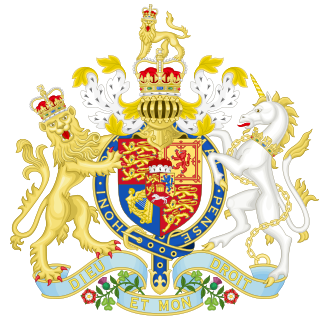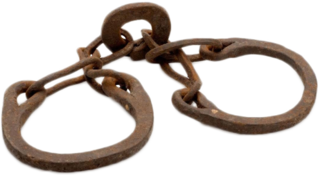 W
WBermuda was originally discovered in 1503 by Spanish explorer Juan de Bermúdez. In 1609, the English Virginia Company, which had established Jamestown in Virginia two years earlier, permanently settled Bermuda in the aftermath of a hurricane, when the crew and passengers of Sea Venture steered the ship onto the surrounding reef to prevent it from sinking, then landed ashore. Bermuda's first capital, St. George's, was established in 1612.
 W
WThe Action of 30 September 1780 was a minor naval engagement off the Bermudas, where HMS Pearl captured Espérance, a French frigate of 32 guns launched in 1779.
 W
WAn Act for prohibiting Trade with the Barbadoes, Virginia, Bermuda and Antego or Act prohibiting Commerce and Trade with the Barbodoes, Antigo, Virginia, and Bermudas alias Summer's Islands was an Act of law passed by the Rump Parliament of England during the Interregnum against English colonies which sided with the Crown in the English Civil War.
 W
WThe Bermuda Conference was an international conference between the United Kingdom and the United States held from April 19 to 30, 1943, at Hamilton, Bermuda. The topic of discussion was the question of Jewish refugees who had been liberated by Allied forces and those who still remained in Nazi-occupied Europe. The only agreement reached was that the war must be won against the Nazis. US immigration quotas were not raised, and the British prohibition on Jewish refugees seeking refuge in Mandatory Palestine was not lifted.
 W
WThe Bermuda Garrison was the military establishment maintained on the British Overseas Territory of Bermuda by the regular British Army, and its local militia and voluntary reserves from 1701 to 1957. The garrison evolved from an independent company, to a company of Royal Garrison Battalion during the American War of Independence, and a steadily growing and diversifying force of artillery and infantry with various supporting corps from the French Revolution onwards. During the American War of Independence, the garrison in Bermuda fell under the military Commander-in-Chief of North America. Subsequently, it was part of the Nova Scotia Command until 1868, and was an independent Bermuda Command from then 'til its closure in 1957.
 W
WBermuda Hundred was the first administrative division in the English colony of Virginia. It was founded by Sir Thomas Dale in 1613, six years after Jamestown. At the southwestern edge of the confluence of the Appomattox and James Rivers opposite City Point, annexed to Hopewell, Virginia in 1923, Bermuda Hundred was a port town for many years. The terminology "Bermuda Hundred" also included a large area adjacent to the town. In the colonial era, "hundreds" were large developments of many acres, arising from the English term to define an area which would support 100 homesteads. The port at the town of Bermuda Hundred was intended to serve other "hundreds" in addition to Bermuda Hundred.
 W
WBetween 1612 and 1687, Bermuda had a series of militias under the Virginia Company, the Somers Isles Company, and the British Crown. In 1687, the first Militia Act was enacted.
 W
WBermuda has organised several different forms of militia between the 1612 and 1815. The roles of the militias included defence of the colony in complement with the activities of the British Army and Royal Navy.
 W
WThe Bermuda sloop is an historical type of fore-and-aft rigged single-masted sailing vessel developed on the islands of Bermuda in the 17th century. Such vessels originally had gaff rigs with quadrilateral sails, but evolved to use the Bermuda rig with triangular sails. Although the Bermuda sloop is often described as a development of the narrower-beamed Jamaica sloop, which dates from the 1670s, the high, raked masts and triangular sails of the Bermuda rig are rooted in a tradition of Bermudian boat design dating from the earliest decades of the 17th century. It is distinguished from other vessels with the triangular Bermuda rig, which may have multiple masts or may not have evolved in hull form from the traditional designs.
 W
WBristol, a port city in south-west England, was involved in the transatlantic slave trade. Bristol's part in the trade was prominent in the 17th and 18th centuries as the city's merchants used their position to gain involvement. It is estimated that over 500,000 enslaved African people were traded by Bristol merchants.
 W
WThe coastwise slave trade existed along the eastern coastal areas of the United States in the antebellum years prior to 1861. Shiploads and boatloads of slaves in the domestic trade were transported from place to place on the waterways. Hundreds of vessels of various sizes and capacities were used to transport the slaves, generally from markets of the Upper South, where there was a surplus of slaves, to the Deep South, where the development of new cotton plantations created high demand for labor.
 W
WHMS Evadne was a converted yacht, commissioned as a warship by the Royal Navy during the Second World War. She survives today as the yacht Marala.
 W
WHurricane Fabian was a powerful Cape Verde hurricane that hit Bermuda in early September during the 2003 Atlantic hurricane season. It was the sixth named storm, fourth hurricane, and first major hurricane of the season, developed from a tropical wave in the tropical Atlantic Ocean on August 25. It moved west-northwestward under the influence of the subtropical ridge to its north, and steadily strengthened in an area of warm water temperatures and light wind shear. The hurricane attained a peak intensity of 145 mph (230 km/h) on September 1, and it slowly weakened as it turned northward. On September 5, Fabian made a direct hit on Bermuda with wind speeds of over 120 mph (195 km/h). After passing the island, the hurricane turned to the northeast, and became extratropical on September 8, before dissipating two days later.
 W
WSir Thomas Gates, was the governor of Jamestown, in the English colony of Virginia. His predecessor, George Percy, through inept leadership, was responsible for the lives lost during the period called the Starving Time. The English-born Gates arrived to find a few surviving starving colonists commanded by Percy, and assumed command. Gates ruled with deputy governor Sir Thomas Dale. Their controlled, strict methods helped the early colonies survive. Sir Thomas was knighted in 1596 by Robert Devereux, 2nd Earl of Essex for gallantry at the Capture of Cadiz. His knighthood was later royally confirmed by Queen Elizabeth I.
 W
WJamestown was the first settlement of the Virginia Colony, founded in 1607, and served as the capital of Virginia until 1699, when the seat of government was moved to Williamsburg. This article covers the history of the fort and town at Jamestown proper, as well as colony-wide trends resulting from and affecting the town during the time period in which it was the colonial capital of Virginia.
 W
WBefore European colonization, the Turks and Caicos Islands were inhabited by Taino and Lucayan peoples. The first recorded European sighting of the islands now known as the Turks and Caicos occurred in 1512. In the subsequent centuries, the islands were claimed by several European powers with the British Empire eventually gaining control. For many years the islands were governed indirectly through Bermuda, the Bahamas, and Jamaica. When the Bahamas gained independence in 1973, the islands received their own governor, and have remained a separate autonomous British Overseas Territory since. In August 2009, the United Kingdom suspended the Turks and Caicos Islands' self-government following allegations of ministerial corruption. Home rule was restored in the islands after the November 2012 elections.
 W
WThe Jamestown settlement in the Colony of Virginia was the first permanent English settlement in the Americas. It was located on the northeast bank of the James (Powhatan) River about 2.5 mi (4 km) southwest of the center of modern Williamsburg. It was established by the Virginia Company of London as "James Fort" on May 4, 1607 O.S., and was considered permanent after a brief abandonment in 1610. It followed several failed attempts, including the Lost Colony of Roanoke, established in 1585 on Roanoke Island. Jamestown served as the colonial capital from 1616 until 1699.
 W
WProspect Camp, also referred to as Prospect Garrison, was the main infantry camp of the Bermuda Garrison. It also contained Fort Prospect, Fort Langton, and Fort Hamilton, as well as being the base for mobile artillery batteries, manned by the Royal Artillery. Outlying parts of the camp were disposed of in the early decades of the Twentieth Century as the garrison in Bermuda was reduced. The core area, including the barracks, passed to the local government when the garrison was withdrawn in 1957.
 W
WSea Venture was a seventeenth-century English sailing ship, part of the Third Supply mission to the Jamestown Colony, that was wrecked in Bermuda in 1609. She was the 300 ton purpose-built flagship of the London Company and a highly unusual vessel for her day, given that she was the first single timbered, merchantman built in England, and also the first dedicated emigration ship. Sea Venture's wreck is widely thought to have been the inspiration for William Shakespeare's play The Tempest.
 W
WSir George Somers was an English privateer and naval hero, knighted for his achievements and the Admiral of the Virginia Company of London. He achieved renown as part of an expedition led by Sir Amyas Preston that plundered Caracas and Santa Ana de Coro in 1595, during the undeclared Anglo-Spanish War. He is remembered today as the founder of the English colony of Bermuda, also known as the Somers Isles.
 W
WThe Spirit of Bermuda is a modern-built Bermuda sloop. She is a replica of a Royal Navy sloop-of-war, depicted in a well-known 1831 painting.
 W
WThe State House (1620) in St. George's was the first purpose-built home of the House of Assembly, which then constituted the only chamber of the Parliament of Bermuda. Other than fortifications, it was Bermuda's first stone building. It is the oldest surviving Bermudian building, again excepting some fortifications, and has been used since 1815 as a Masonic lodge.
 W
WOrdnance Island is located within the limits of St. George's town, Bermuda. It lies close to the shore opposite the town square, in St. George's Harbour.
 W
WThe London Company was an English joint-stock company established in 1606 by royal charter by King James I with the purpose of establishing colonial settlements in North America.
 W
W'Warwick Camp' was originally the rifle ranges and a training area used by units of the Bermuda Garrison based elsewhere in the colony. Today, the Camp is the home of the Royal Bermuda Regiment.